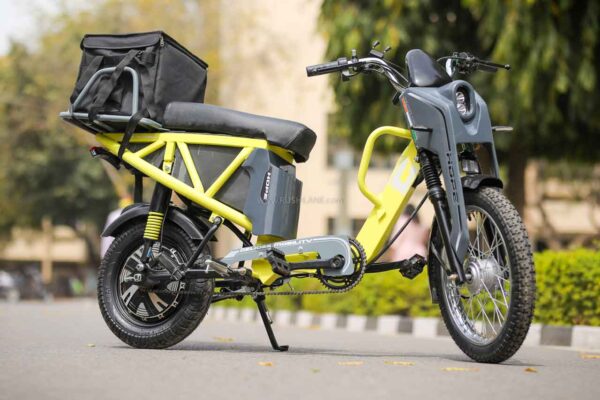
Electric two wheelers and cargo vehicles a top choice for delivery fleet services
Two wheelers are a huge volume market in India. And the need for a two wheeler is second to none. As the days pass by, we’re headed to a future wherein more electric vehicles will be made available to us. The hope is that at some point, they’ll be mass market options that dominate the market, and are affordable.
The approach though nascent, already outlines clear patterns. For one, electric cargo vehicles and electric two-wheelers are largely being designed for fleet use. And while the market for electric two-wheelers for personal commute tries to gain a stronger foothold with each passing month, fleet orders bring in volumes. More and more companies are now committed to carbon footprint reduction causes and electric fleet vehicles appear to be fulfilling that promise.

Geloise Mobility Hope scooter
Geliose Mobility has launched the Hope electric scooter. The entity is an Indian Institute Of Technology (IIT) Delhi incubated startup. While a lot of startups are now fusing business plans based on manufacturing low cost, low-speed electric two-wheelers for fleet use, Geliose Mobility has brought back pedal-assist. Reminiscent of days of yore, when one could pedal a certain part of the route, either to save on petrol costs or because one’s tank ran dry.
Bringing back the pedal knocks on nostalgia but how much utility it provides is difficult to understand. Considering these units are designed for delivery, it wouldn’t make any sense if one needed to pedal to destination with load.

Hope uses a slide and rides feature so the rider can switch different load carrying accessories or rear seat depending based on delivery and load requirement. The scooter costs 47 grands, and is currently only available to B2B customers.
20 paise for a kilometre
Geliose Mobility will work with logistics and delivery companies, and meet varied local delivery requirements. For seamless functionality the company is keen on building charging hubs and scooter maintenance points on frequent routes of delivery partners. This will further be accentuated by roadside assistance and roadside battery replacement if the need arises.
Running cost is listed as 20 paise for a kilometre. Top speed is pegged at 25 km/hr. The low speed unit doesn’t require a driving license or registration. The scooter is offered with a portable charger and portable lithium-ion battery. This can be conveniently charged at home. It can be fully charged in 4 hours.

Battery capacity range includes one for 50 kms and another for 75 kms. Design philosophy leans on lean. Keeping in mind utility, Hope’s body structure includes a strong and lightweight frame. Being smallish would help with easy navigation through regular city traffic.
Being a smart scooter, it benefits from a battery management system, and data monitoring system. With new age scooters being tech based, users will benefit from IoT based systems and data analytics.










